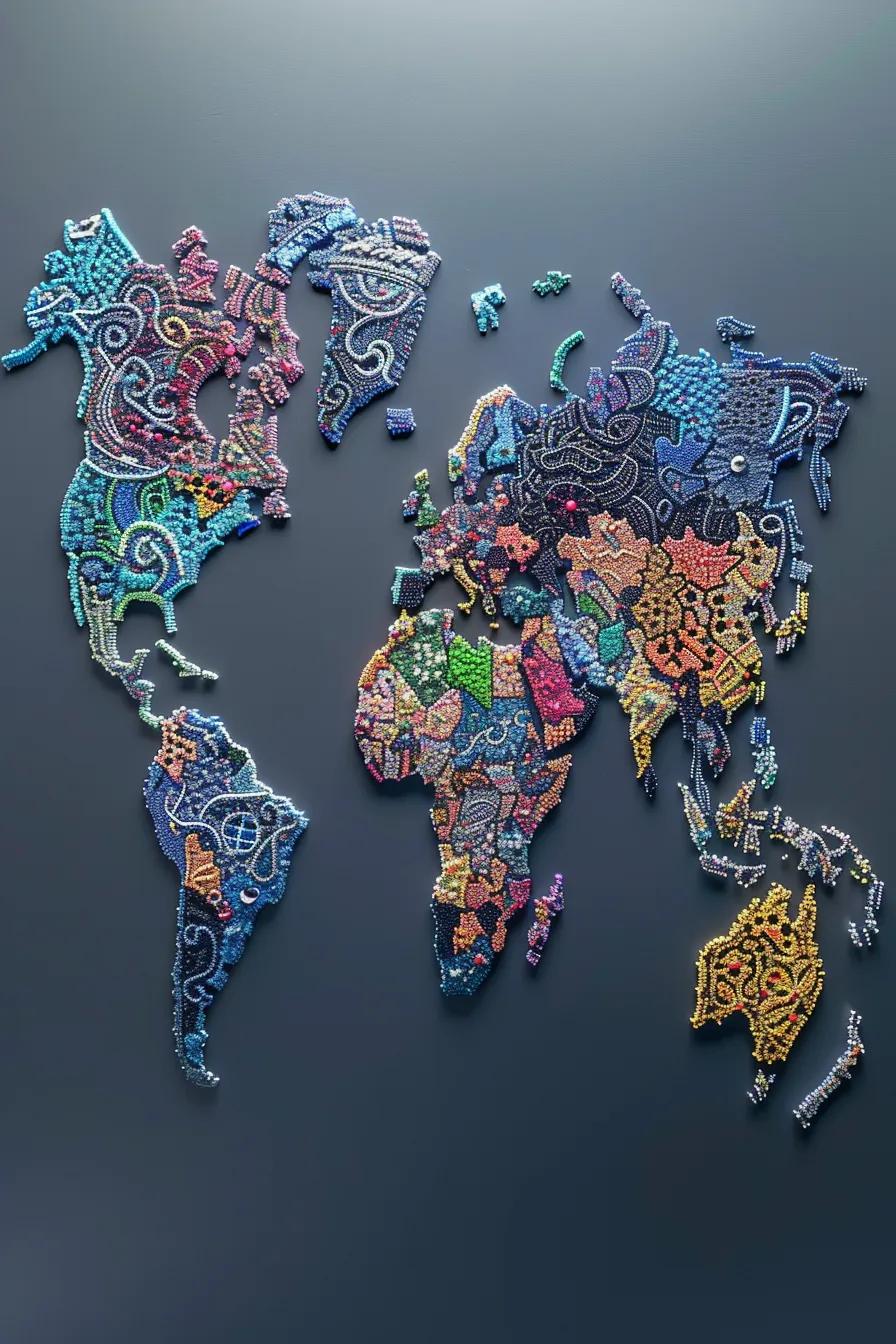Unlock Global Growth: Top 10 Languages for Business Expansion

To truly connect with a worldwide audience, a single-language strategy just won't cut it. Multilingual content is your key to building brand authority, earning customer trust, and boosting sales across diverse markets. Did you know that 75% of internet users prefer browsing in their native tongue? Businesses that speak the local language are a remarkable 3.5 times more likely to close a deal. This guide will walk you through why translation is crucial, spotlighting the top ten languages based on economic clout and digital reach. We'll explore industry-specific advantages and lay out actionable strategies for 2025 and beyond. You'll discover:
- Which languages unlock the largest markets and why they're game-changers
- How smart localization opens doors to industry-specific opportunities
- Proven methods for building a future-ready translation strategy
- The evolving role of AI in language selection
- Up-and-coming trends and the languages you'll need tomorrow
By strategically weaving in connections, like "Mandarin Chinese opens the door to China's massive e-commerce landscape," this educational roadmap provides the essential blueprint for expanding your reach through multilingual content.
The Top 10 Languages for Global Business: Why They Matter

Speaking the world's leading languages means aligning your brand with major economies and vibrant online communities. A language's strategic value hinges on its number of speakers, the GDP of its associated countries, e-commerce penetration, and digital growth trajectory. This strategic alignment fuels market expansion, cultivates customer loyalty, and sharpens your competitive edge.
Which languages fuel the biggest global markets and economic expansion?
English continues its reign as the universal business language, essential for international trade, diplomacy, and digital operations. Mandarin Chinese connects businesses directly to Asia's economic powerhouse, where e-commerce sales are projected to surpass $5 trillion. Spanish opens doors to over 20 Latin American economies and represents the second-largest and fastest-growing demographic in the U.S. by population and spending power.
How do language demographics shape global business success?
Languages experiencing rapid digital adoption offer a significant boost to translation investments. For instance, the surge in internet usage among young people in the MENA region, who speak Arabic, is driving demand for fintech and e-learning content. In India, the digital economy's expansion, fueled by Hindi speakers, necessitates highly localized mobile apps and platforms to capture the estimated 200 million new online shoppers by 2026.
What's the impact of multilingual content on international sales?
Multilingual content boosts customer engagement by an impressive 50%, reduces website bounce rates, and significantly improves conversion rates through culturally resonant messaging. Companies that localize product descriptions, user interfaces, and customer support channels typically see an average sales uplift of 20% in their target markets.
Unlock Global Market Opportunities Through Translation
Translating into key languages transforms passive audiences into engaged customers by dismantling cultural and linguistic barriers. Localization ensures your product messaging, legal notices, user experience, and marketing campaigns resonate with regional customs and regulations.
Industries that stand to gain the most include:
- E-commerce and Retail: Tailored product catalogs and checkout processes in local languages dramatically reduce cart abandonment.
- Technology and Software: Localized interfaces, documentation, and support are crucial for driving adoption in high-growth markets.
- Finance and Fintech: Translated compliance documents and customer communications build essential trust in regulated sectors.
- Healthcare and Pharma: Multilingual patient information and regulatory submissions are vital for ensuring safety and market access.
These industry-specific applications demonstrate how "localization enhances cultural relevance and customer engagement" by integrating local payment methods, understanding color symbolism, and adapting content styles.
Which industries benefit most from translating into specific languages?
E-commerce businesses are localizing product listings into Spanish to capture the Latin American market, while SaaS companies translate their user interfaces into German to serve Europe's robust engineering and manufacturing sectors. In the MENA region, translating fintech apps into Arabic accelerates digital banking adoption among younger demographics.
How does localization boost cultural relevance and customer engagement?
Localization goes beyond just language; it involves adapting imagery, date formats, and legal conventions. For example, customizing Arabic content for right-to-left interfaces and incorporating local Islamic holiday schedules fosters deeper connection and brand loyalty in the Middle East.
What are the key challenges and solutions in multilingual business translation?
Businesses often grapple with inconsistent terminology, complex regulations, and limited resources. Best practices include building robust translation memories, engaging qualified in-country reviewers, and utilizing translation management systems that blend AI-powered machine translation with expert post-editing (MTPE).
Why Mandarin Chinese is Essential for E-commerce and Growth in Asia
Mandarin Chinese is the dominant language of Asia's digital economy, boasting over 1 billion speakers and a Chinese e-commerce market projected to exceed $5 trillion. Translating product catalogs, mobile apps, and marketing campaigns into Mandarin provides immediate access to the world's largest online consumer base.
Within China, local platforms like WeChat and Alibaba require Mandarin content to navigate their unique features, payment systems, and social commerce integrations. Simplified Chinese is standard in Mainland China, while Traditional Chinese is used in Hong Kong, Taiwan, and by overseas Chinese communities—a critical distinction for precise audience targeting.
How does Mandarin Chinese impact China's booming e-commerce market?
Mandarin translation enables participation in major shopping events like Singles' Day, driving significant sales volumes and allowing brands to connect with consumers through popular platforms such as Taobao and JD.com.
What are the differences between simplified and traditional Chinese for localization?
Simplified Chinese uses fewer strokes per character, enhancing readability for Mainland users, especially on mobile devices. Traditional Chinese retains the classical forms preferred in Hong Kong and Taiwan, ensuring cultural authenticity and building consumer trust in those regions.
Which Asian industries heavily rely on Mandarin for market expansion?
Technology manufacturers, automotive exporters, and consumer electronics companies translate their manuals and user interfaces into Mandarin to meet stringent regulatory standards and the high consumer expectations for quality and detail.
Spanish: Your Gateway to Latin American and US Hispanic Markets
Spanish connects brands with over 500 million native speakers across 20 countries, and Latin America's combined GDP surpasses $7.5 trillion. In the U.S., the Hispanic consumer base is the fastest-growing demographic, projected to represent a quarter of the population by 2050.
Regional variations—such as Castilian, Latin American, and Mexican Spanish—require careful localization to adapt idioms, currency symbols, and tone. Tailored Spanish content in marketing, legal disclaimers, and customer support leads to deeper resonance and higher conversion rates.
How does Spanish translation unlock access to Latin American economies?
Translating e-learning platforms, mobile payment apps, and consumer goods catalogs into Spanish reduces friction and leverages regional payment preferences, accelerating market entry in countries like Mexico, Colombia, and Argentina.
Why is Spanish crucial for reaching the US Hispanic consumer base?
US Hispanic consumers possess over $1.7 trillion in purchasing power, and a significant 73% prefer products marketed in Spanish. Bilingual campaigns in both English and Spanish strengthen brand loyalty and broaden audience reach.
What localization strategies are most effective for Spanish-speaking markets?

Effective strategies include mapping regional SEO keywords, using culturally relevant imagery, and partnering with local influencers. For instance, employing Mexican Spanish for marketing in Mexico City and distinct Latin American variants in Andean regions enhances authenticity.
Arabic, German, and French: Powering Business Success in Key Regions
Grouping three vital languages from Europe and the MENA region highlights diverse economic drivers and localization needs. Each language offers unique pathways for market entry and customer engagement.
What opportunities does Arabic translation unlock in the Middle East and North Africa?
Arabic localization supports energy sector documentation, fintech compliance, and e-retail experiences optimized for mobile-first, young demographics, driving digital wallet adoption and online marketplaces.
Why is German essential for European trade and automotive innovation?
Germany's €4.4 trillion GDP and its world-leading engineering firms necessitate German-language technical translations, patent filings, and B2B marketing materials for seamless collaboration with OEMs and research institutions.
How does French connect businesses with Europe, Africa, and Canada?
French translation provides access to 29 countries and numerous international organizations. Localizing luxury brand campaigns for Paris, agricultural technology solutions for West Africa, and bilingual services for Quebec expands reach across continents.
Portuguese, Japanese, Hindi, and Korean: Driving Emerging Market Growth
These niche but high-potential languages are shaping dynamic markets across four continents. Each language represents unique growth dynamics and sectoral applications.
What makes Portuguese vital for Brazil and Lusophone Africa?
Portuguese translation unlocks Brazil's position as the ninth-largest economy—with 2025 e-commerce sales expected to exceed $100 billion—and supports growing digital ecosystems in Angola and Mozambique. Localized customer support and payment integrations build essential trust.
Why is Japan strategic for the tech and automotive industries?
Japanese translation ensures precision in technical specifications, user interfaces, and marketing campaigns for a market renowned for its innovation. Localization respects high-context communication norms to meet consumer expectations for meticulous detail.
How does Hindi support India’s rapidly expanding digital economy?
Hindi localization taps into a market of 600 million speakers and a booming e-commerce sector projected to reach $200 billion by 2026. Adapting mobile apps, educational content, and regional SEO terms in Hindi effectively engages consumers in tier-2 and tier-3 cities.
What role does Korea play in the tech, entertainment, and gaming sectors?
Korean translation serves South Korea's tech-savvy audience with high spending power. K-culture exports—including music, games, and beauty products—rely on localized subtitles, in-app text, and marketing materials to capture global fan bases.
How AI and Machine Translation Are Shaping Language Choices for 2025 and Beyond
AI-powered translation solutions accelerate the creation of multilingual content, while human post-editing ensures cultural nuance. Machine translation with post-editing (MTPE) boosts efficiency by 60% and reduces costs without compromising accuracy.
What advantages do AI-powered translation and MTPE offer businesses?
AI translation enhances speed and lowers costs, while expert post-editors address context-specific nuances. This hybrid approach ensures quality, consistency, and scalability for high-volume content needs.
How does AI integration influence language selection for translation?
Automated language demand analytics can pinpoint emerging markets and trending dialects—such as variations of African French—guiding strategic language prioritization based on user behavior signals.
What are the best practices for combining human expertise with machine translation?
Maintain up-to-date translation memories, involve in-country reviewers early in the process, and continuously train AI engines with domain-specific data to improve semantic accuracy and cultural relevance.
Best Practices for a Winning Global Translation Strategy
A successful translation strategy requires balancing market potential, resource allocation, and cultural sensitivity. Prioritize languages by evaluating GDP share, digital adoption rates, and the competitive landscape.
- Strategic Language Selection: Rank languages based on market size, online user behavior, and revenue potential.
- Localization Workflow Optimization: Integrate Translation Management Systems (TMS), CAT tools, and ongoing terminology reviews.
- Quality Assurance: Combine automated QA checks with linguistic validation from in-country experts.
- Performance Tracking: Monitor key performance indicators (KPIs) such as localized page traffic, conversion rate improvements, and content return on investment (ROI).
How to prioritize languages based on market potential and business objectives?
Utilize data-driven scoring models that weigh target audience size, projected GDP growth, and competitive intensity. Focus on high-impact languages first, then strategically expand to more niche variants.
What localization techniques ensure cultural sensitivity and hyper-local relevance?
Engage native linguists, adapt visuals and user experience flows to local conventions, and test beta content with focus groups to uncover subtle cultural nuances. Business translations are essential for effectively engaging with local audiences.
How to measure the ROI and success of multilingual content initiatives?
Track localized organic search rankings, conversion rate increases in target markets, customer satisfaction scores, and the incremental revenue generated by translated assets.
Future Trends Shaping Multilingual Content and Global Business Success
Emerging languages, advancements in AI, and shifting market dynamics will redefine translation priorities. Africa's growing internet penetration suggests increasing demand for Swahili and Nigerian Pidgin, while Southeast Asia's digital boom points to significant opportunities in Indonesian and Vietnamese.
How will emerging markets and new languages reshape global translation needs?
As internet penetration in Sub-Saharan Africa approaches 50%, Swahili and Hausa localization will become critical for fintech and e-learning platforms aiming for first-mover advantages.
What role will evolving AI technologies play in translation and localization?
Adaptive AI will automatically detect cultural tone, context, and sentiment, generating emotionally resonant translations that align with brand voice without extensive manual editing.
How can businesses stay ahead with continuous monitoring and adaptation?
Implement quarterly reviews of language performance metrics, integrate real-time market insights from AI analytics, and adapt strategies dynamically as search intent and user behaviors evolve.
Bridging language divides remains the cornerstone of global business success. By prioritizing the right languages, leveraging AI-enhanced workflows, and embedding cultural nuance at every step, organizations can expand their reach, foster trust, and drive sustainable growth across borders.








